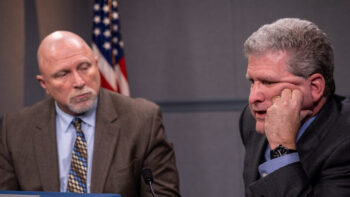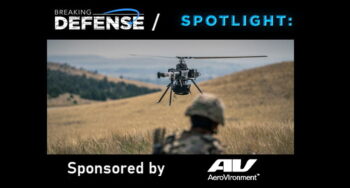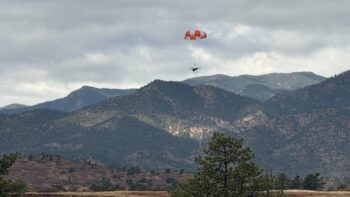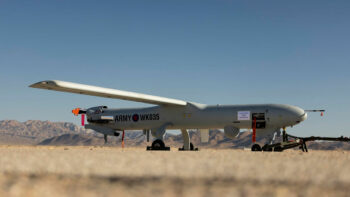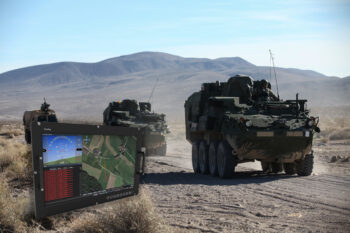CENTER FOR STRATEGIC & INTERNATIONAL STUDIES: Some Marine Corps units, but not all, will get extra training in large-scale combat as the Pentagon refocuses from counterinsurgency to great power conflict. While every Marine would have a role in a major war with Russia or China — the service isn’t big enough to leave anybody on the bench in such a crisis — a “surge” force based in the continental United States will get additional high-intensity training that Marine Expeditionary Units patrolling the seas will not.
“You may see two different MAGTFs (Marine Air-Ground Task Forces) emerging, all with in the same Marine Corps,” said Lt. Gen. Brian Beaudreault, deputy commandant for plans, policies, and operations, speaking at a CSIS forum.
One kind will be the traditional Marine Expeditionary Unit (MEU), the smallest type of MAGTF — basically a reinforced battalion with its own aircraft and logistics support — embarked on an Amphibious Readiness Group (ARG) of (traditionally) three Navy ships. Before each deployment, a MEU’s Marines learn about the region they will operate in, and they train on a wide range of operations, from disaster relief to evacuating civilians to all-out combat. If a major war breaks out, the nearest MEUs will be among the first responders, rapidly joining together into larger formations, “disrupting and delaying” the enemy, Beaudreault said. Some MEUs may well be inside a high-tech enemy’s kill zone when the shooting starts, immediately targeted by precision weapons and forced to go to ground.
The other kind will be the surge force. Instead of patrolling the planet, these Marines will stay in the United States and conduct additional training in high-intensity combat, including complex, large-scale exercises involving forces much bigger and more varied than the battalion-plus of a MEU on a three-ship ARG. If a major war breaks out, the surge forces will deploy from the US en masse on fleets of Navy ships: “perhaps 20 to 30 amphibs that are coming forward from CONUS (the continental United States) with the war-winning effort,” accompanied by other warships, Air Force squadrons, and Army brigades, Beaudreault told reporters after the forum. For the beleaguered and perhaps besieged MEUs on the front line, the surge force is the cavalry coming to the rescue.
A third kind of Marine Corps force that Beaudreault didn’t emphasize as much is the Special Purpose MAGTF, a small, land-based force with a lot of air transport to rapidly respond to crises. The Marines have three of these units — focused respectively on the Mideast, Africa, and Latin America — that primarily reinforce threatened embassies, support special operations, and conduct other small-scale missions. That said, the Mideast and African SPMAGTFs could be reinforced for major combat, said Beaudreault, while the American one is purely humanitarian.
Note that none of these three kinds of MAGTF is the one we’ve seen for most of the last 17 years: a counterinsurgency force rotating into Iraq or Afghanistan on a regular schedule to pacify a particular territory alongside Army and allied units, operating out of fixed land bases. The Marines were glad to get out of this mission and get back to their traditional sea-based amphibious operations. Indeed, it’s only the reduction in Mideast deployments that frees up forces to train for major wars, Beaudreault and his fellow generals emphasized.
Training Up
The patrolling MEUs and big-war surge force are built out of the same basic units, “it’s really just two different focuses of training,” Beaudreault told reporters. “Those battalions and squadrons are interchangeable as long as they have the opportunities to train.”
In fact, the basic train-up for both kinds of units will probably be the same: Where they differ is in their more advanced, specialized training. Essentially, MEUs train for a wide range of operations in a specific region, while surge force units focus on high-intensity operations but not any specific region. (Although Beaudreault didn’t point it out specifically, note the synergy here: The surge force will fall in on the MEUs, who can provide the regional expertise they lack, even as the surge force provides the massed combat power the MEUs lack).
Of the three Marine Expeditionary Forces — each compromising a division of ground troops, an air wing, and logistics support — Okinawa-based III MEF has the most preparation for major combat, since they’ve long focused on a potential war in Korea, Beaudreault said. I MEF in Camp Pendleton, California and II MEF in Camp Lejeune, North Carolina have been consumed with counterinsurgency and counterterrorism, however, and are only recently refocusing on great power war.
Even now it’s not easy, said the II MEF commander, Lt. Gen. Robert Hedelund. “We have lots of folks on the road around the world in II MEF doing the nation’s bidding, and I would like to have more of them at home, preparing them for a higher-end confrontation,” Hedelund said at CSIS. “We’re working on all that, but … you can’t just flip a switch and say come home, retool for the high-end fight, and next year we’re good to go.”
What does it take? To start with, since 2004, Marines have deployed in battalions and brigades but not in division-sized units: The MEF headquarters have trained, equipped, and overseen troops but not commanded combat operations. Now the Marines need to rebuild the MEF’s capability to fight through command post exercises, tabletop simulations, and other wargames. It’s not just relearning old tricks, either, because the MEF has been significantly reorganized for 21st century conflict, most prominently with a MEF Information Group to handle cyber, electronic, and information warfare. It requires training and experimentation to learn how to use the new organization to best effect, Hedelund said.
Training for major war also requires freeing up forces from the constant press of deployments to conduct large-scale exercises, Beaudreault said, “to get regimental commanders and division commanders able to do maneuver with multiple battalions.”
Nor is it just a Marine Corps challenge, Beaudreault went on: To train for large-scale amphibious warfare, you need large numbers of amphibious ships. That’s particularly tricky because of the Navy’s ongoing struggles to get maintenance done on time, although the Navy is “trying increase throughput in the shipyard to get more amphib availability,” he said.
In the larger picture, the surge force also must train to work with the Army and Air Force, plugging into the joint command and logistics systems. Ultimately, that requires a common concept for how to fight.
The Marines are working with the Army and Special Operations Command on Multi-Domain Battle, helping unify the ground services, said Lt. Gen. Robert Walsh, deputy commandant for combat developments. The Chief of Naval Operations has joined the Commandant of the Marine Corps in signing off on a shared concept for Littoral Operations in a Contested Environment (LOCE, pronounced Loki) and are about to co-sign one for Expeditionary Advance Base Operations (EABO). The Marines and Air Force have revived high-level “warfighter talks” after a decade in abeyance and are working closely on “dynamic basing,” which aims to break US dependence on big, easily targeted airfields.
“Concepts drive where we go, they drive. our training, our equipping, our manning, how we organize,” Walsh said. “That’s driving everything we do.”
Romania signs LOA to secure entry to F-35 club
“This decision marks a significant milestone in Romania’s defense strategy and its commitment to maintaining a robust and advanced military force,” Lockheed Martin said in a statement.
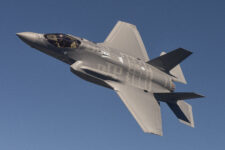







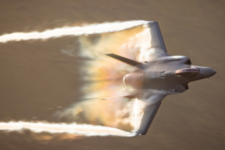


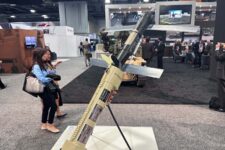
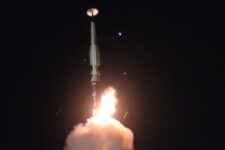



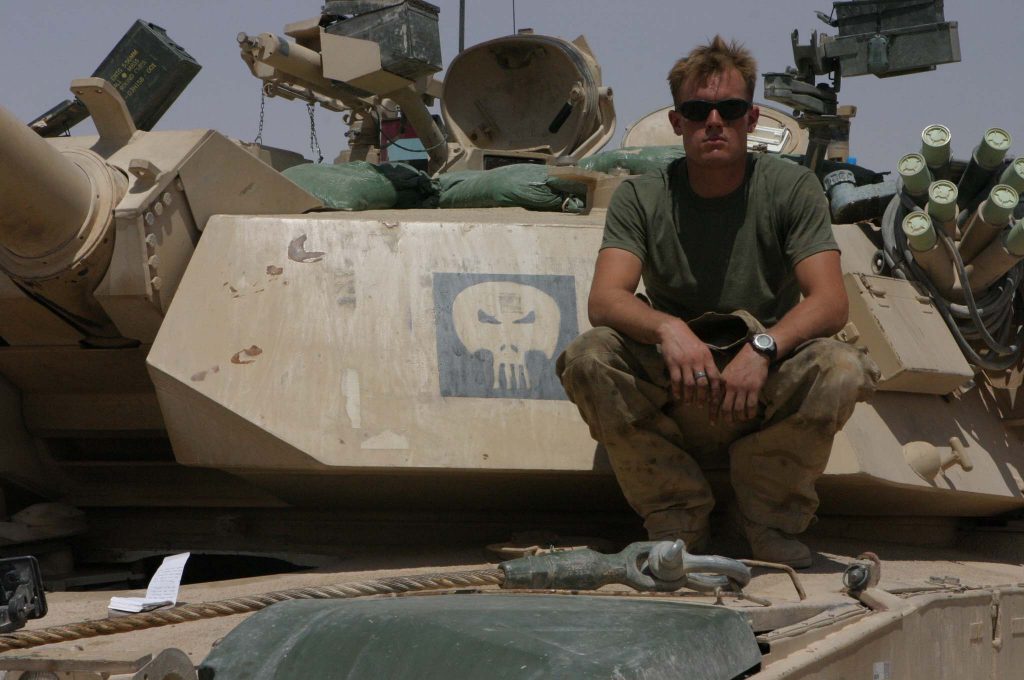
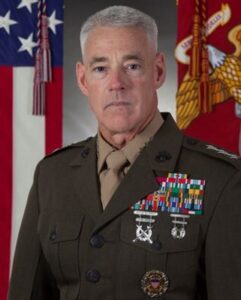
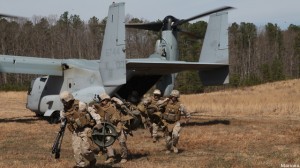
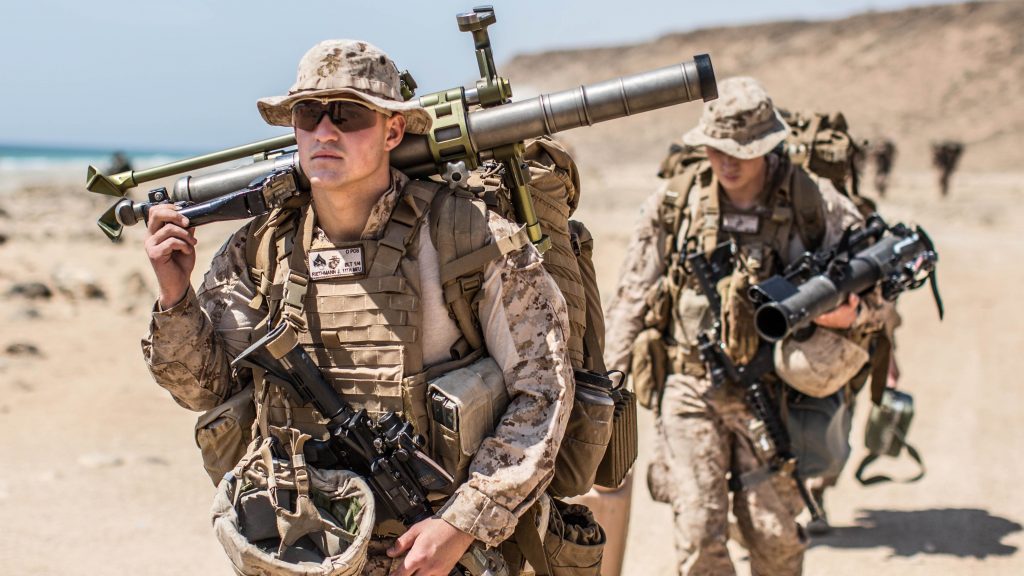
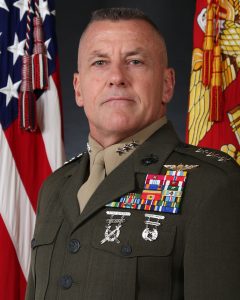
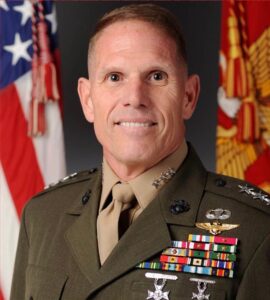
![E-2D_AR_1[1]](https://breakingdefense.com/wp-content/uploads/sites/3/2024/10/E-2D_AR_11-350x233.png)



